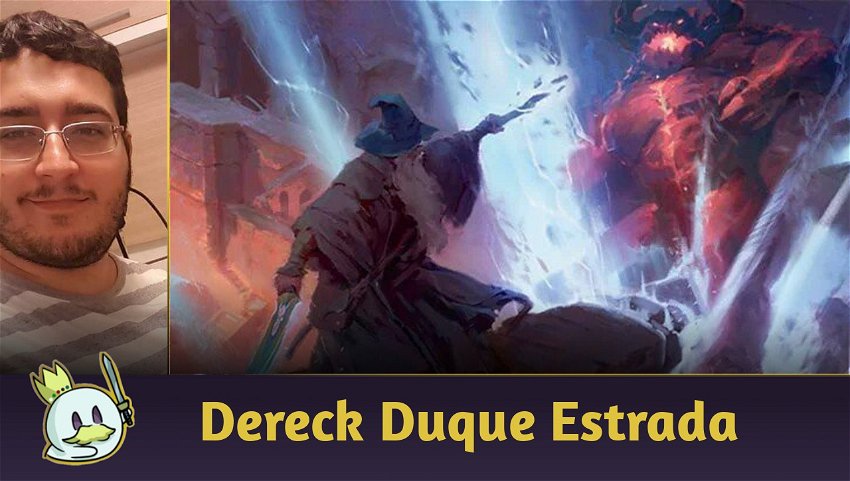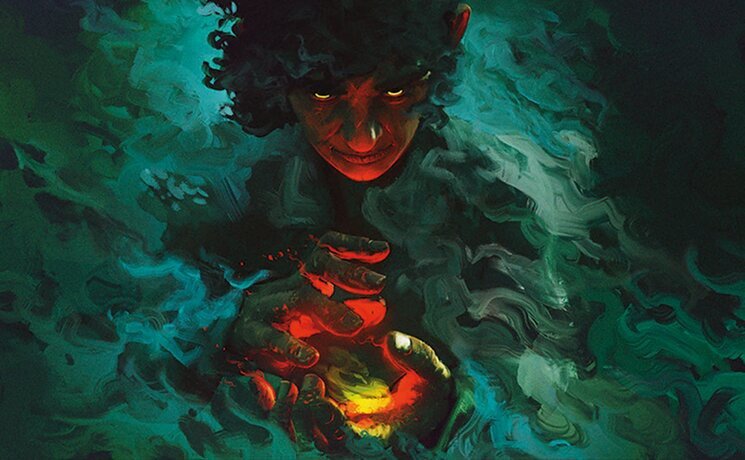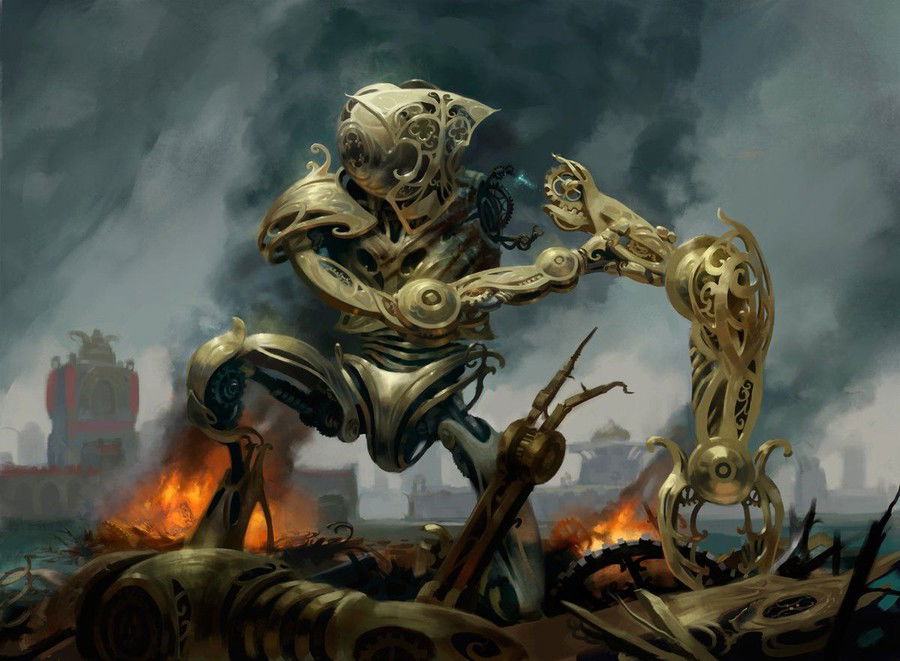Introduction
June arrived, bringing a string of spoilers for one of the most anticipated Magic sets of recent times, The Lord of the Ring: Tales of Middle-Earth. A special set that unites one of the most beloved fictional scenarios with the most popular card game released.
Well, the wait is over, and with the end of the spoiler season, we already have all the cards revealed, being able to analyze which ones are the best suited for each format.
Here we're only looking at Limited, with a focus on Prerelease and Drafts.
Ad
Constructed Formats
Before we discuss the part that matters in Limited, I would like to remind you that the cards in the set won't be legal in Pioneer and Standard, with their use being restricted to formats such as Modern, Legacy, Pauper, Vintage and Commander.
Warning given, let's go to Limited!
Mechanics
Let's start by talking about new mechanics and some existing ones returning in the set.
The Ring Tempts You
The most innovative mechanic is the relationship between the ring and the player, and to simulate this relationship, the effect “The Ring Tempts You” was created.
The mechanics have similarities to dungeons in the Adventures in the Forgotten Realms.

If it's the first time you perform the effect in the game, you get an emblem called The Ring and then choose, if you have one, a creature to be the ring's bearer. This choice can be modified every time the effect "The Rings Tempts You" occurs, allowing you to change the bearer, keep the same one, or choose one for cases where there are no creatures the first time the ability triggers.
After the first effect, The Ring emblem gains the first ability, transferring it to its bearer, and so each time the effect "The Ring Tempts You" occurs, the emblem will advance one space in its ability line accumulating the previous effects and improving its bearer.

Amass Orc
Following the same principle as the Amass mechanic, if you don't have an army, you create a 0/0 black army creature token, in this case an orc-type creature, and put the number of +1/+1 counters equal to Amass's level. If an army token already exists, it gains Amass Orc's +1/+1 counters and gains the Orc type along with its other types.


Food
Another returning mechanic is the Food tokens, they are artifacts that have the ability to pay 2 mana to tap and sacrifice the artifact, with that, the player gains 3 life.

In a format where mana can often be surplus and unused, an artifact that allows a life gain can be critical. In addition to effects that consider artifacts or food tokens, which end up appearing on the set.

With the main mechanics finished, let's go to the archetypes.
Archetypes and color combinations
Now let's introduce the main archetypes of the set, with the top 5 common and uncommon cards for each archetype.
Azorious Second Draw
For blue and white combinations, we have a game plan with interactions for when drawing more than two cards in a turn, gaining advantages and keeping resources in the hand.
The Watcher in the Water, Prince Imrahil the Fair, Knights of Dol Amroth and Gwaihir the Windlord are good cards to be within the archetype, while Faramir, Prince of Ithilien, Gandalf, Friend of the Shire and Captain of Umbar are good engines to keep the deck running.
Ad

Best Common Cards

Best Uncommon Cards

Orzhov Aristocrats
In the white and black colors, we have the Aristocrats plan, which consists of effects that occur when your creatures die. In this game plan, the deck will be structured with creatures that have effects when they die, creatures that sacrifice other creatures or generate effects when another dies, and creatures that put more creatures on the battlefield to keep the archetype engine running.
Denethor, Ruling Steward, Faramir, Field Commander are good pieces to develop the mechanic, providing resources to maintain synergy. Cirith Ungol Patrol, Lash of the Balrog and Nasty End are good ways to make use of the sacrifice, while Gollum, Patient Plotter, Haunt of the Dead Marshes and Mordor Trebuchet are means to keep the sacrifice resources.
King of the Oathbreakers is a very significant card for these colors, protecting itself and spawning creatures to spin the mechanic. Shadow Summoning is also interesting for the archetype, as it can create two bodies with one card.

Best Common Cards

Best Uncommon Cards

Boros Aggro
In the white and red color combination, we have some synergies to explore, but they all have one thing in common: the goal is to end the game as quickly as possible.
For this, we have synergy in the human tribe, with cards that generate advantages for this tribe, with the strategy of increasing bodies on the table to exploit this advantage.
Théoden, King of Rohan and Erkenbrand, Lord of Westfold are relevant pieces for the archetype, Faramir, Field Commander is a good acquisition to sustain gas, replenishing creatures through draws and being able to generate board volume with The Ring emblem.
Horn of Gondor can make the board explode if there is no answer, in addition to guaranteeing a constant board growth within the archetype. Flowering of the White Tree allows you to strengthen your battlefield by forcing considerable losses on your opponent.

Ad
Another archetype included in the colors are legends, and can be very well-used alongside humans.
Merry, Esquire of Rohan, Éowyn, Fearless Knight and Éomer, Marshal of Rohan are good indications to follow the strategy.
Esquire of the King and Rising of the Day gain a lot of value with a large presence of legendary creatures on the field.
Since one of the ring bearer's abilities is to become legendary, it can make the strategy more accessible.

Best Common Cards

Best Uncommon Cards

Selesnya Food
In the white and green combinations, we will have cards that consider Food tokens to have extra effects or to enhance, either considering their quantities on the field or sacrificing pieces.
So, the structure of the deck will be composed of cards that create foods and cards that take advantage of foods to generate effects.
Butterbur, Bree Innkeeper, Samwise, Gamgee, Meriadoc Brandybuck and The Shire are ways to steadily generate food, while Hobbit's Sting, Nimble Hobbit and Mushroom Watchdogs make use of these tokens to enhance their effects.
Peregrin Took helps transform extra foods into card advantage, which can be a way to guarantee land drops or find a solution for a time when the battlefield is stuck.
Rosie Cotton of South Lane when well-matched to the archetype can easily get out of control, needing to be answered before it dominates the board. Shortcut to Mushrooms manages to boost the effects that sacrifice food tokens, being very synergistic with the archetype.

Best Common Cards

Best Uncommon Cards

Dimir Midrange
In the blue and black combination, we have an archetype more focused on gaining value, always looking to use cards that have more than one effect.
Thus, the deck can be a little more proactive against slower opponents and a little more reactive against faster opponents. Being able to create armies with Amass to pressure an opponent or hold more aggressive starts, or use mechanics related to the Ring bearer to develop more effects and take more value from the cards.
The Mouth of Sauron and Saruman the White are good options, with Mordor Muster being an excellent support for both.
Ad
Cards that replace themselves and generate effects like Birthday Escape and Hithlain Knots or that generate more than one effect like Deceive the Messenger,Soothing of Sméagol, Claim the Precious are good for support.
Voracious Fell Beast and Witch-king of Angmar are excellent creatures for the archetype.

Best Common Cards

Best Uncommon Cards

A very efficient synergy can be the combination of Meneldor, Swift Savior and The Mouth of Sauron or Voracious Fell Beast generating a lot of value on the board, either by the amass trigger executed twice or by removing two opposing creatures.
Izzet Spells
In blue and red colors, we have the classic archetype of spells. The strategy aims to use permanents that benefit from the use of instants or sorceries, whether creating tokens, copying spells, increasing power or generating other effects that add value to the controller, thus generating value with removals and card draw.
As an archetype that seeks to do multiple spells per turn and always conserve resources, cards like Saruman the White or Storm of Saruman can get a lot of value out of it.
Erebor Flamesmith and Fiery Inscription are ways to deal direct damage while setting up the game.
Fall of Cair Andros is an excellent card combined with the red damage removals, becoming extremely effective in the late game, ensuring a way to deal damage to the opponent's main creatures and still grow your army.
Gandalf the Grey and Gandalf, Friend of the Shire are creatures that optimize the archetype, providing a considerable advantage.

Best Common Cards

Best Uncommon Cards

Simic Elves Scry
In the blue and green colors, we have a synergy with the Scry keyword and with the elf tribe.
As the basis of the archetype, we have Arwen Undómiel and Elrond, Lord of Rivendell functioning as the gear and fuel of the archetype.
Elrond, Master of Healing is a great reason to be within the archetype, ensuring replenishment and power growth, bringing a lot of value to your board.
Nimrodel Watcher with Celeborn the Wise allows you to apply constant pressure on the opponent even in locked board situations.
Ad
Mirror of Galadriel allows keeping the archetype running by keeping resources in hand.

Best Common Cards

Best Uncommon Cards

Rakdos Goblins + Orcs
With the black and red combination, we have an archetype related to orcs, goblins and armies. Cards like Mauhúr, Uruk-hai Captain and Uglúk of the White Hand manage to generate a lot of value with the Amass Orcs, being supported by creatures that have this ability like Dunland Crebain, Easterling Vanguard, Gothmog, Morgul Lieutenant and Grishnákh, Brash Instigator.
Permanents that maintain the Amass Orcs strategy can also be very effective in the deck, such as Book of Mazarbul, March from the Black Gate, and Fall of Cair Andros

Another point of relevance in the colors are the synergies with treasures. Glóin Dwarf Emissary, Lobelia Sackville-Baggins and Swarming of Moria are ways to be able to increase the amount of mana available to a greater threat or reduce the cost of The Balrog, Durin's Bane, and can be decisive when entering the battlefield.

Best Common Cards

Best Uncommon Cards

Golgari Midrange
In the archetype of black and green colors, we have a game plan more geared towards a longer game. Although we manage to have graveyard recursion, in these colors, there is only the rare saga One Ring to Rule Them All that makes it possible to feed the graveyard to reanimate a more impactful creature.
The most practical way to take advantage of this type of strategy is through landcycling, making use of Troll of Khazad-dûm or Generous Ent to guarantee land drops and reanimating with Rise of the Witch-King, but that game plan isn't as efficient. The reanimate spell is uncommon, not being as available to the Limited.
Therefore, the ideal is to guarantee land drops, seek positive trades and control the board with bigger creatures, making use of mana ramps like Delighted Halfling, Wose Pathfinder and Inherited Envelope to make spells such as Shelob, Child of Ungoliant, Quickbeam, Upstart Ent, Last March of the Ents, Shadow of the Enemy among other examples.
Ad

Best Common Cards

Best Uncommon Cards

Grull 4 Power Stompy
In the red and green combination, there's a game plan of scaling the creatures and increasing the power of the board turn by turn, having the spell effects improved if you control a creature with power 4 or greater.
Strider, Ranger of the North, Entish Restoration, and Ent's Fury are cards that take advantage of this mechanic.
For this type of strategy, creatures that increase power of another like Haradrim Spearmaster, Bag End Porter or Erkenbrand, Lord of Westfold can provide what is needed to generate the gain with cards thar care about creatures with power 4 or greater.

Another way is to use spells that increase power, whether instants, sorceries, equipment or auras. Gimli’s Fury, Gimli’s Axe, Rush the Room or Galadhrim Bow are some examples.
Another relevant option is Legolas, Master Archer and Gimli, Mournful Avenger, creatures with the condition of having permanent power increase as we build the archetype to enhance their synergies.

Best Common Cards

Best Uncommon Cards

Removals
Since this is a format where cost-benefit is important, we are going to bring some data from to observe the efficiency of the removals.
Improvised Club handles 89.7% of the format, being able to take out most of the set for just 2 mana.
Smite the Deathless handles63.5% of the creatures.
Ranger's Firebrand deals with 35.7% of creatures.
With this, we can conclude that the overwhelming majority of creatures have 3 or 4 toughness, and with that in mind, we can get an idea of the capacity of each creature when it comes to structuring the deck.
Correcting the Manabase
A point of attention is the absence of dual lands, being necessary to look for ways to correct mana with artifacts, especially for archetypes that lack green.
Inherited Envelope and Phial of Galadriel are the ideal fixes for providing a ramp together, but if your pool doesn't have these cards, as solutions we have Shire Scarecrow which works as a filter by correcting the color your lands produce.
Ad
It is also ideal for strategies that use more than two colors and to guarantee the presence of a color in cases where the deck is very well divided between both.
Another way to correct colors is with Wizard's Rockets, which has the downside of being a single-use filter, but with the benefit of replacing itself by providing a draw when going to the graveyard.
For decks with more legends, we have Great Hall of the Citadel and The Grey Havens that can generate other colors, facilitating mana corrections.
Finally, Shire Terrace is a way to adjust the mana, which may be necessary to splash third colors or even to guarantee the necessary color that is missing.
Conclusion
The set features interesting synergies that can be well crafted to generate a lot of value, such as the Rings Tempt You mechanic, which can be very impactful within Limited. I'm curious to know how it will behave at a real table.
I found the blue and green combination to be extremely synergistic, and could present a very interesting power development on the board and conserve resources. I'm really looking forward to attending to a Prerelease, which will take place between 6/16/23 and 6/22/23, and organizing the archetypes and structuring the deck!
I hope I was able to help you on this journey through the Middle-earth, have fun with the Prerelease and enjoy the Drafts in Magic Arena!
Doubts, questions or compliments, use the comments field, and we will be happy to answer.
See you in the next article and see you later!














— Comentarios0
Se el primero en comentar